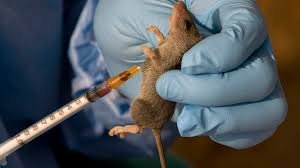
Lassa fever or Lassa hemorrhagic fever (LHF) is an acute viral hemorrhagic fever caused by the Lassa virus and first described in 1969 in the town of Lassa, in Borno State in Nigeria.The virus is similar to ebola. The primary animal host of Lassa fever virus Natal multimammate mouse (Mastomys natalensis),an animal found in most sub-saharan Africa.
The virus is probably transmitted by contact with the faeces or urine of animals accessing grain stores in residences. Given its high rate of incidence, this virus is a major problem in affected countries like Guinea, Liberia, Nigeria Sierra Leone all in West Africa.
Signs and symptoms
This disease shows no symptoms in 80% of cases, but in the remaining 20%.
About 5 thousand people die from this disease every year. Lassa virus affects almost every system in the body and the symptoms depends on the affected organ.
The most common ones include: bleeding from the gums, conjunctivitis, swollen face,high grade fever. other symptoms include: vomiting, difficulty in swallowing, stomach ache, hepatitis,cough,sore throat,chest pain, meningitis convulsions.
Cause

Rats are the natural reservoir of the Lassa virus, ubiquitous in human households and eaten as a delicacy in some areas.
The Lassa virus is zoonotic ( transmitted from animals to man).the virus shed in their excreta which can be aerosolized
Infection in humans typically occurs by exposure to animal excrement through the respiratory or gastrointestinal tracts. Inhalation of tiny particles of infectious material is believed to be the most significant means of exposure.it is possible to acquire the virus through broken skin or mucous membranes that are directly exposed to infectious material. Transmission from human to human has also been established.
prevention
Control of the rat population is quite impractical, so measures are limited to:
- keeping rats out of homes and food supplies
- maintaining personal hygiene by keeping yourself and your environment clean
- effective management of victims and also developing an efficient quarantine system.
Treatment
There is no particular drug for now for the treatment of Lassa fever, so personal hygiene is highly encouraged.
People suspected of Lassa fever infection should be admitted to isolation facilities and their body fluids properly disposed
Early and aggressive treatment using ribavirin is also advised.
When Lassa fever infects a pregnant woman late in her mind trimester, delivery should be induced in other to save the life of the woman due to the fact that the virus has an affinity for the placenta and other highly vascular tissues. The foetus only makes it out alive in one out of ten cases , so the focus is always on the life of the mother.
Prognosis
An estimate of 15-20% of hospitalized Lassa fever patuent will die of the illness, the overall mortality rate is estimated to be 1%, but during epidemics, mortality can climb as high as 50%. The mortality rate is greater than 80% when it occin pregnant women during their third trimester and the best thing that is done in that type of case is to abort the baby to save the mothers life.
Summary
Here is a little advice from me to you as a friend.
BE HYGIENIC IN NATURE, ELIMINATE THE RATS AND SAVE THE WORLD!!
Till we meet again am your friend
